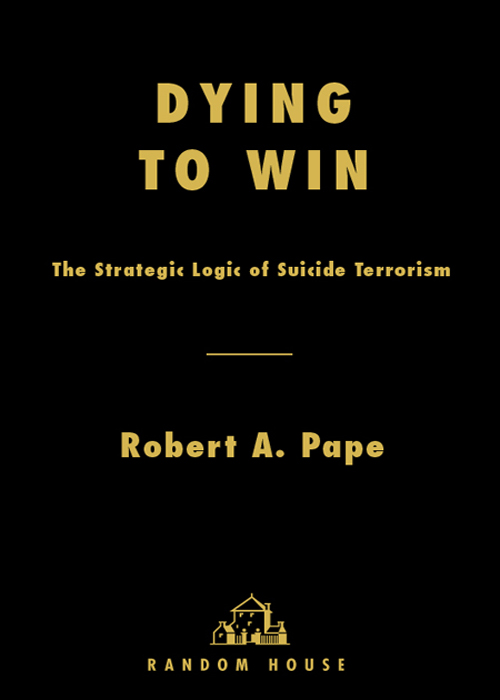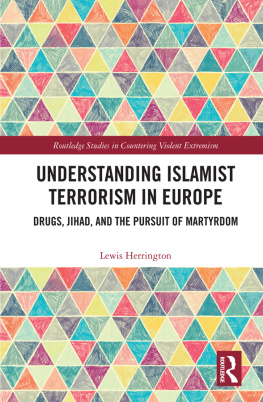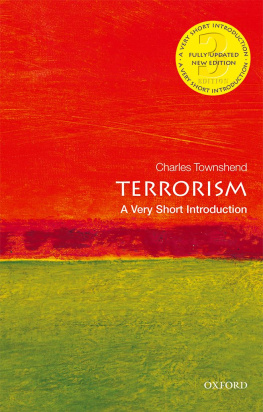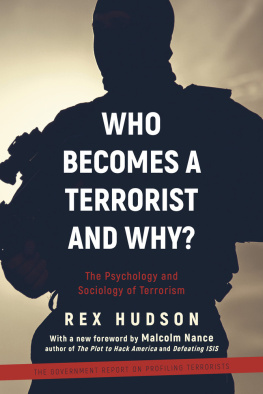
Dying to Win
The Strategic Logic of Suicide Terrorism
Robert A. Pape

RANDOM HOUSE
NEW YORK
Contents
To my mother,
Marlene Pape
INTRODUCTION
The Growing Threat
SUICIDE TERRORISM IS rising around the world, but there is great confusion as to why. Since many such attacksincluding, of course, those of September 11, 2001have been perpetrated by Muslim terrorists professing religious motives, it might seem obvious that Islamic fundamentalism is the central cause. This presumption has fueled the belief that future 9/11s can be avoided only by a wholesale transformation of Muslim societies, a core reason for broad public support in the United States for the recent conquest of Iraq.
However, the presumed connection between suicide terrorism and Islamic fundamentalism is misleading and may be encouraging domestic and foreign policies likely to worsen Americas situation and to harm many Muslims needlessly.
I have compiled a database of every suicide bombing and attack around the globe from 1980 through 2003315 attacks in all.1 It includes every attack in which at least one terrorist killed himself or herself while attempting to kill others; it excludes attacks authorized by a national government, for example by North Korea against the South. This database is the first complete universe of suicide terrorist attacks worldwide. I have amassed and independently verified all the relevant information that could be found in English and other languages (for example, Arabic, Hebrew, Russian, and Tamil) in print and on-line. The information is drawn from suicide terrorist groups themselves, from the main organizations that collect such data in target countries, and from news media around the world. More than a list of lists, this database probably represents the most comprehensive and reliable survey of suicide terrorist attacks that is now available.
The data show that there is little connection between suicide terrorism and Islamic fundamentalism, or any one of the worlds religions. In fact, the leading instigators of suicide attacks are the Tamil Tigers in Sri Lanka, a Marxist-Leninist group whose members are from Hindu families but who are adamantly opposed to religion. This group committed 76 of the 315 incidents, more suicide attacks than Hamas.
Rather, what nearly all suicide terrorist attacks have in common is a specific secular and strategic goal: to compel modern democracies to withdraw military forces from territory that the terrorists consider to be their homeland. Religion is rarely the root cause, although it is often used as a tool by terrorist organizations in recruiting and in other efforts in service of the broader strategic objective.
Three general patterns in the data support my conclusions. First, nearly all suicide terrorist attacks occur as part of organized campaigns, not as isolated or random incidents. Of the 315 separate attacks in the period I studied, 301 could have their roots traced to large, coherent political or military campaigns.
Second, democratic states are uniquely vulnerable to suicide terrorists. The United States, France, India, Israel, Russia, Sri Lanka, and Turkey have been the targets of almost every suicide attack of the past two decades, and each country has been a democracy at the time of the incidents.
Third, suicide terrorist campaigns are directed toward a strategic objective. From Lebanon to Israel to Sri Lanka to Kashmir to Chechnya, the sponsors of every campaign have been terrorist groups trying to establish or maintain political self-determination by compelling a democratic power to withdraw from the territories they claim. Even al-Qaeda fits this pattern: although Saudi Arabia is not under American military occupation per se, a principal objective of Osama bin Laden is the expulsion of American troops from the Persian Gulf and the reduction of Washingtons power and influence in the region.
Understanding suicide terrorism is essential for the promotion of American security and international peace after September 11, 2001. On that day, nineteen al-Qaeda terrorists hijacked four airlines and destroyed the World Trade Center towers and part of the Pentagon, killing nearly 3,000 innocent people. This episode awakened Americans and the world to a new fear that previously we had barely imagined: that even at home in the United States, we were vulnerable to devastating attack by determined terrorists, willing to die to kill us.
What made the September 11 attack possibleand so unexpected and terrifyingwas that willingness to die to accomplish the mission. The final instructions found in the luggage of several hijackers leave little doubt about their intentions, telling them to make
an oath to die.... When the confrontation begins, strike like champions who do not want to go back to this world.... Check your weapons long before you leave... you must make your knife sharp and must not discomfort your animal during the slaughter.... Afterwards, we will all meet in the highest heaven....2
The hijackers suicide was essential to the terrible lethality of the attack, making it possible to crash airplanes into populated buildings. It also created an element of surprise, allowing the hijackers to exploit the counterterrorism measures and mind-set that had evolved to deal with ordinary terrorist threats. Perhaps most jarring, the readiness of the terrorists to die in order to kill Americans amplified our sense of vulnerability. After September 11, Americans know that we must expect that future al-Qaeda or other anti-American terrorists may be equally willing to die, and so not deterred by fear of punishment or of anything else. Such attackers would not hesitate to kill more Americans, and could succeed in carrying out equally devastating attacksor worsedespite our best efforts to stop them.
September 11 was monstrous and shocking in scale, but it was not fundamentally unique. For more than twenty years, terrorist groups have been increasingly relying on suicide attacks to achieve major political objectives. From 1980 to 2003, terrorists across the globe waged seventeen separate campaigns of suicide terrorism, including those by Hezbollah to drive the United States, French, and Israeli forces out of Lebanon; by Palestinian terrorist groups to force Israel to abandon the West Bank and Gaza; by the Liberation Tigers of Tamil Eelam (the Tamil Tigers) to compel the Sri Lankan government to accept an independent Tamil homeland; by al-Qaeda to pressure the United States to withdraw from the Persian Gulf region. Since August of 2003, an eighteenth campaign has begun, aimed at driving the United States out of Iraq; as of this writing, it is not yet clear how much this effort owes to indigenous forces and how much to foreigners, possibly including al-Qaeda.
More worrying, the raw number of suicide terrorist attacks is climbing. At the same time that terrorist incidents of all types have declined by nearly half, from a peak of 666 in 1987 to 348 in 2001, suicide terrorism has grown, and the trend is continuing. Suicide terrorist attacks have risen from an average of three per year in the 1980s to about ten per year in the 1990s to more than forty each year in 2001 and 2002, and nearly fifty in 2003. These include continuing campaigns by Palestinian groups against Israel and by al-Qaeda and Taliban-related forces in Saudi Arabia and Afghanistan, as well as at least twenty attacks in Iraq against U.S. troops, the United Nations, and Iraqis collaborating with the American occupation.
Next page














